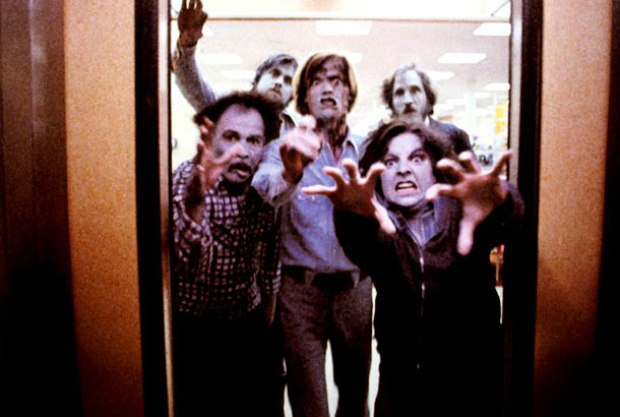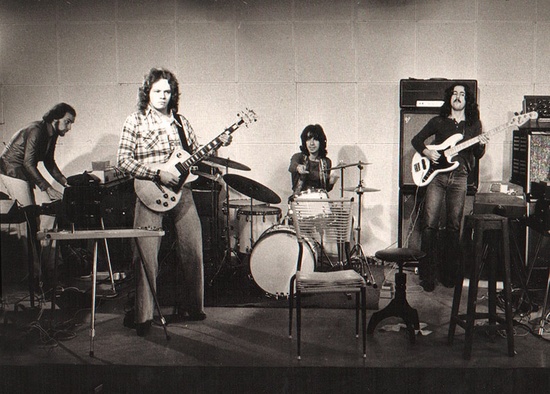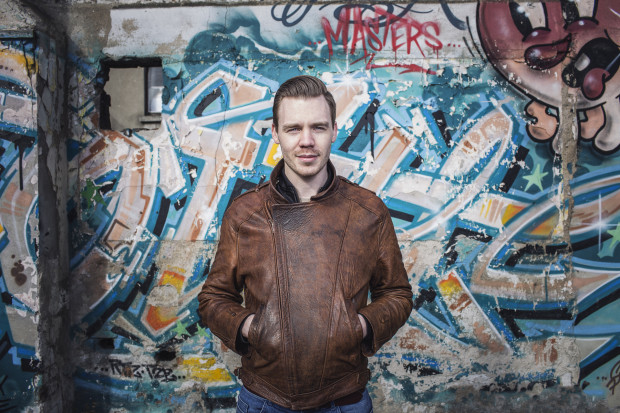As it’s Halloween and Claudio Simonetti’s kings of the Italian horror genre just played District 8, Dublin last night, it seemed apt to have a look at the irrefutable endowment Goblin made to horror soundtracks, and their contribution to music as a whole.
In 2015 the band is more popular, and influential than they have been at any time in the past. They probably never thought their scores would serve as a touchstone for metal, electro and experimental music, but it undoubtedly has. Goblin emerged from the remnants of a number of splintered Italian prog rock acts in the early 70s.Keyboardist and frontman Claudio Simonetti and original drummer Walter Martino played together in Ritratto Di Dorian Gray, guitarist Massimo Morante was part of Era di Acquario and bassist Fabio Pignatelli’s was in Rivelazioni, and they initially decided on the moniker Oliver.
After a failed attempt to hit the big time in London, Oliver returned home and penned a deal with Italian label Cinevox, who subsequently changed the band’s name to The Cherry Five and released their self-titled debut album. Unfortunately for them the record bombed, but it attracted the interest of Italian film director Dario Argento, who at the time was working on ambitious giallo – an Italian slasher subgenre of film and literature – Profondo Rosso.
Argento’s style of film-making took inspiration from classic Italian horror directors such as Mario Bava, who made Black Sabbath in 1963. The heavy metal pioneers fronted by Ozzy Osborne adopted the name after seeing the film listed in a cinema across the road from their rehearsal room, having initially decided to write a song by the same name. Displeased with composer Giorgio Gaslini, who originally worked on the film score for Profondo Rosso, Argento, sought the services of Pink Floyd. After failing to do so, he brought in local band The Cherry Five to inject life into the score. The band were given one night to write it and one day to record it, a challenge they duly accepted, and put their stamp all over it. It began a collaborative relationship and the band changed their name to Goblin.
On the Profundo Rosso soundtrack the band were said to have deconstructed Gaslini’s original score, but they made it their own by adding layers of creepy organ, guitar and percussion. There’s clever experimental minimalism akin to Krautrock pioneers Can and even touches of revered American composer Philip Glass. At times it’s jazzier in composition – perhaps unsurprisingly so as original composer Gaslini was also a jazz pianist – the percussion is fast-paced and exceptionally intricate, with single piano notes stabbed intermittently. You’re inclined to glance over your shoulder for someone with a meat-cleaver whilst listening. The film became a hit as a result, and the soundtrack album topped the Italian charts, beginning a mutually beneficial relationship between director and band.
Thereafter, they were intrinsically linked, not just with the horror genre, but with a very specific set of cult movies. Goblin still attempted to indulge their progressive rock fixations on the occasional non-soundtrack album, such as 1976’s Roller, which was traditionally prog in style. The group was unhappy with both the results and the label’s promotional efforts, and nearly disbanded. However, Argento intervened to smooth things over, and put Goblin to work creating a new soundtrack; this time, he shot the film only after hearing the music. The result, 1977’s Suspiria, became Goblin‘s most acclaimed work, combining the band’s riff-heavy and busy drum work with more eerie electronics than ever before, as well as sinister experimental vocal effects.
The title-track is masterful, it’s a mixture of modern and classical instrumentation intermingling, the use of various synthesisers, electric piano and grand piano, to create a sound that twinkles ominously. Mid-way through the song twists and mutates, making use of more electronics and warped synthesiser sounds, spectral whispered vocals re-emerge and the high-pitched celesta rings out over the top. Elsewhere on the soundtrack ‘Witch’ has an industrial quality and ‘Blind Concert’ starts out with bells chiming, before getting funky (it was the 70’s) with complicated drum rolls and cymbal crashing a feature throughout.
Film and soundtrack were hits once again, and the Goblin/Argento affiliation became unshakable. The band worked on over a dozen film soundtracks over the next two years. It ignited a highly successful period for the band, which came to an end in 1978 when the band split after the recording of George A. Romero‘s ‘Zombi‘ – also known as Dawn of the Dead. Romero favoured library music, as evidenced on Dawn of the Dead’s predecessor Night of the Living Dead. He used Goblin’s arrangements sparingly, however, Argento made his own European cut of the film which made use of everything. On the score for the European version of the soundtrack, they were credited as ‘The Goblins’.
On the Dawn of the Dead soundtrack you get a real sense of a band at the peak of their powers, spanning genres and experimenting with their sound. The soundtrack was made in 1978, a period pre-dating a lot of metal bands, and on a song such as Zaratozom you here a style of metal that became synonymous with a lot of 80’s metal bands.
Opener ‘L’alba dei morti viventi’ is essentially the blueprint for the Italian zombie movie sound. There’s slow, plodding drums, static synthesized bass and spooky sampled choral sounds, accompanied by bells and spooky wobbly analogue lead, which sounds like someone molesting a Theremin, an instrument that has always creeped me out; Jon Spencer of Blues Explosion fame) just about made it cool. While it is music synonymous with that film and zombies, the sound of the organ, with it’s connotations to mass and death harnesses real sinister undertones when utilised properly in any horror film.
It has 80’s stamped all over it, they are sounds that have come to define that era of horror films; for many of us when we think of Halloween or scary films it is these sounds we recall, lurking somewhere amongst scary memories of films like Halloween and Nightmare on Elm Street. After countless fall-outs, line-up changes, live shows and litigation, the band are finally back to something resembling their best. But it’s their imaginative approach, and traversing of genres, which led to unforgettable soundtracks that carved their place in musical history. Garrett Hargan







